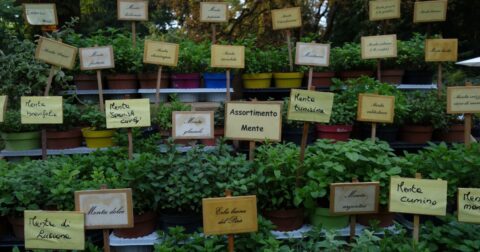Explainer
Agriculture Affects Deforestation Much More Than Most People Realize
Climate•7 min read
Reported
Two new biodiversity studies find a link between what we eat and the shrinking number of wild plant and animal species left on the planet.


Words by Grace Hussain
Biodiversity can seem like an abstract concept. It includes everything from microscopic algae to forest elephants — but it’s also more than just a count of how many plants and animals are still around. At the heart of this key theory of conservation is the variety of life that’s necessary for keeping the natural world in balance.
Two new studies take a closer look at what’s putting biodiversity at risk. One study examined native plants while the other measured wild animals. Researchers in both cases traced the answer back to what we eat. But there is good news here: what you eat can be part of the solution. Together, countries can make a shift towards more plant-rich sustainable diets — a change that would protect more wild landscapes and, in turn, the biodiversity that dwells there.
First, the bad news. In a study of over 30 million records of native plants in the United Kingdom collected over two decades, researchers found fewer than half of all remaining plant species are indigenous to the area, though only nine plant species have been declared extinct since the 1930s.
Meanwhile, an analysis of global animal biomass spearheaded by researchers at the Weizmann Institute of Science found that the mass of all wild mammals — whether terrestrial or marine — is less than 10 percent that of livestock populating the planet.
Native plants and wild animals are essential components of healthy and biodiverse ecosystems. When ecosystems are in balance, they work together to provide us with clean air, fresh water, pollination for crops and high quality soil.
According to the two studies, meat is wreaking havoc with that balance. Consumer demand for meat, increasing numbers of factory farms, land use change and farm pollution are all factors wiping out biodiversity.
Globally, we consume 350 million tons of meat every year, but that number will soon head upwards along with the world’s population. Projections suggest the amount of meat will increase to at least 470 million tons by 2050, when the world’s population is expected to reach nearly 10 million people.
Without a shift to more sustainable farming, the meat and dairy industry will simply keep expanding to feed more people. Take for example Ireland, where late last year government regulators received applications for 36 new and expanding pig and poultry farms.
Yet those expanding livestock farms create lots of manure — and it all has to go somewhere. Native grasslands are easily overwhelmed by large amounts of nitrogen in soils from farm animal waste — leading to declines in 53 percent of native plant species. Meanwhile, 58 percent of more recent introductions, such as many crops and garden plants, have steadily increased in population.
In Britain, farm pollution from manure has also proven detrimental to native wetland plants like heather and lousewort, which are extremely vulnerable to even the smallest changes in their environment.
Agriculture not only harms native plants but threatens thousands of animal species with massive population losses over the next thirty years.
The problem is meat and dairy farming are especially resource-intensive — requiring lots of land and water. And the more that agriculture expands, the more the earth becomes populated by farm animals bred to grow as large as possible and as quickly as possible to feed humans.
“The global composition of animal biomass reflects human-induced pressures on wild mammal populations,” says PhD candidate Loir Greenspoon and her colleagues in their paper. The researchers created a model to estimate biomass composition for all animals based on existing data.
As factory farms continue to pop up around the world to meet rising demand for meat, our food system continues to put pressure on wild species and where they live.
Half of all habitable land is already used for food production, and 77 percent of that is used for animal agriculture. Cattle ranching – a major degrader of grassland and driver of deforestation – crowds out wild grazing animals such as elk and deer on U.S. public lands. In the Amazon, 80 percent of deforested land has already been converted to pasture for bovine to graze but some of the highest rates of deforestation are now found in west Africa and Indonesia.
At the same time, land is not the only resource at risk from expanding animal farms. To make foods like cheese, beef, lamb and pork, farmers require an extremely large amount of water. In the case of lamb, each kilogram of meat needs more than 1800 liters of water, or around 475 gallons.
Shifting the way we eat can help protect biodiversity and prevent the worst impacts of climate change. In fact, experts warn that we can’t reach global climate goals of limiting warming to 1.5 degrees Celsius without making key fixes to our food system.
The way to do that, researchers repeatedly confirm, is by eating a plant-forward diet. Eating less meat and more plants helps protect biodiversity, reduce greenhouse gas emissions, use less water and allow for more land to be reclaimed by natural ecosystems.
This piece has been updated.